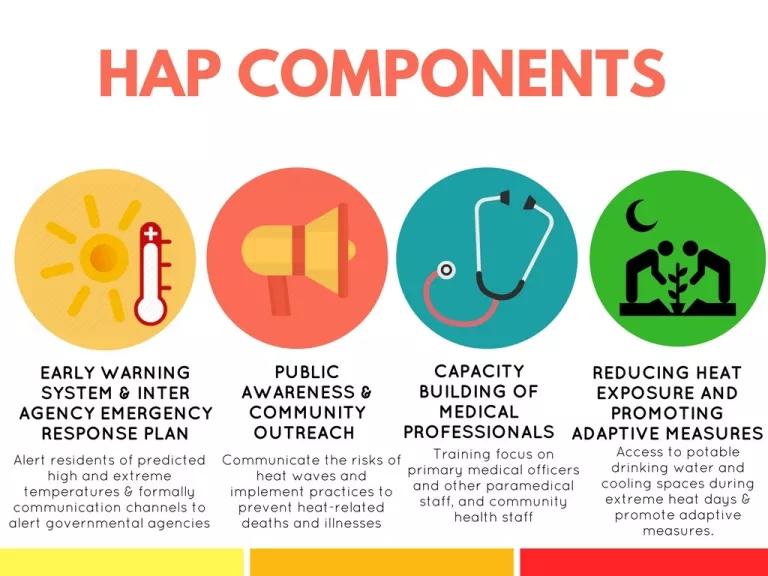India’s Heat Season Arrives Early and Extreme

It’s only March, and communities from Kerala to Gujarat are already battling extreme heat in India. Temperatures reached 41ºC (105ºF) in Surat along with a steep 20 percent jump in emergency services related to heat. Communities in Kerala were hit again by climate change with extreme heat this week following the devastating flooding last fall. The Indian Meteorological Department (IMD) issued warnings of warmer than normal temperatures in several states across India and a specific heat wave warning for Gujarat and Kerala.
Extreme heat puts millions of people in India and around the world at risk. So far, India’s heat waves have accounted for over 22,000 deaths since 1992, according to the National Disaster Management Authority (NDMA). To build resilience to extreme heat, NDMA recently convened its annual workshop of key stakeholders including IMD, leading states and experts, such as NRDC and our partners the Indian Institute of Public Health - Gandhinagar. An important development this year is NDMA’s new goal to expand heat action plans to 19 states in India.
Extreme Heat Is a Global Problem
The sobering report from the Intergovernmental Panel on Climate Change (IPCC) last fall warns of more extreme temperatures in the United States, China and India, the three largest greenhouse gas emitters in the world. Heat waves are becoming more intense and more frequent in India and around the world, fueled by climate change. Heat waves aren’t just an inconvenience—heat can kill.
The global wake-up call to extreme heat happened in 2003 when a European heat wave resulted in a devastating 70,000 deaths. In 2006, the California heat wave resulted in hundreds of deaths and thousands of patient visits. In 2015, heat waves caused over 4,000 deaths in South Asia—including India and Pakistan. Recent extreme temperatures in California resulted in tragic wild fires, causing alarming air pollution levels in major cities, major damage to infrastructure, and multiple deaths. The historic Ahmedabad heat wave in 2010 resulted in over 800 excess deaths in one week alone, leading to the urgency to innovate and develop the groundbreaking Heat Action Plan.
Climate change is fueling more and more extreme heat. Last year, 2018, was the fourth hottest year on record. Globally, 14 of the 15 hottest years ever recorded have occurred since 2000. Rate of warming in India by the end of the century under a high emissions scenario is 5ºC—scientists suggest a global heat rate of just 2ºC would be devastating. In India and in many developing nations, heat is debilitating for a large portion of the population. Huge numbers of people work outside in the blazing sun, from cart pullers and salt farmers to construction workers and traffic police. Huge numbers of people commute on foot, scooters, rickshaws and other non-air-conditioned vehicles. The vast majority of buildings and homes, more than 90 percent, don’t have air conditioning either. Many people spend long hours in the blistering sun just to earn a living.
People should not die from heat. Heat related illness is largely, almost entirely preventable. When a body overheats symptoms include dehydration, nausea, vomiting, headaches, skin rashes, muscle cramps – heat stroke, and heat related illness – to massive organ failure and death. However, if a patient can get to a cool place and ice major organs, heat deaths and illness can be prevented. City led programs for early warning systems for extreme heat, such as the Heat Action Plans across India, go a long way to building resilience to extreme heat in the face of rising temperatures.
Seasonal Outlook and Forecasts
IMD is pivotal in effective early warning systems for heat waves. IMD provides 5-day forecasts for heat to over 300 cities. As IMD has for the past three consecutive years, it issued seasonal outlook from March to May.
IMD’s forecasts are extremely important. The IMD forecasts allows city leaders to issue “heat alerts” when local thresholds are crossed. These forecasts provide lead time that allows communities, states and cities to prepare local plans with medical professionals, emergency ambulance services, and civil society groups, among others. Lead time allows critical pieces to be put into place, such as ice packs at urban health centers and door-to-door education in some communities.
NDMA Stepped-Up Efforts
NDMA organized a two-day workshop in Nagpur, Maharashtra that highlighted states’ heat preparedness efforts and helped exchange knowledge on heat stress prevention. NDMA is leading efforts to increase heat wave awareness and heat stress prevention efforts across the country with an increased effort over the past few years, as discussed at the recent workshop. NRDC presented international practices and participated during the workshop.
NDMA works in states across India to develop local heat action plans to combat heat waves. The aim for 2019 is to expand from the current 13 states implementing plans and 17 notified states to 19 states in India and over 100 cities and districts. Through these plans, governments, health officials, and communities work together to promote actions such as drinking water and avoiding the sun—simple and practical efforts that will save lives. NRDC and our partners the Indian Institute of Public Health-Gandhinagar have worked with partners since 2013 to develop the first state heat action plan in Ahmedabad and to scale to several cities and states.
As temperatures continue to rise this heat season, NDMA, IMD, many states and partner organizations such as NRDC are stepping up to build resilience to extreme heat and climate change. The coordinated efforts on strengthening heat resilience has the potential to save lives from the increasingly severe effects of climate change.
Lindsay Weinberg, NRDC India Program Assistant, contributed to this blog.

Key Resources
- NDMA Heat Wave Guidelines
- Expanding Heat Resilient Cities Across India - Issue Brief
- City Resilience Toolkit: Response to Deadly Heat Waves and Preparing for Rising Temperatures
- How to Manual for Heat Action Plans
- YouTube Clips on the Ahmedabad Heat Action Plan
- CNN Innovative Cities – India Cool Roofs Feature
